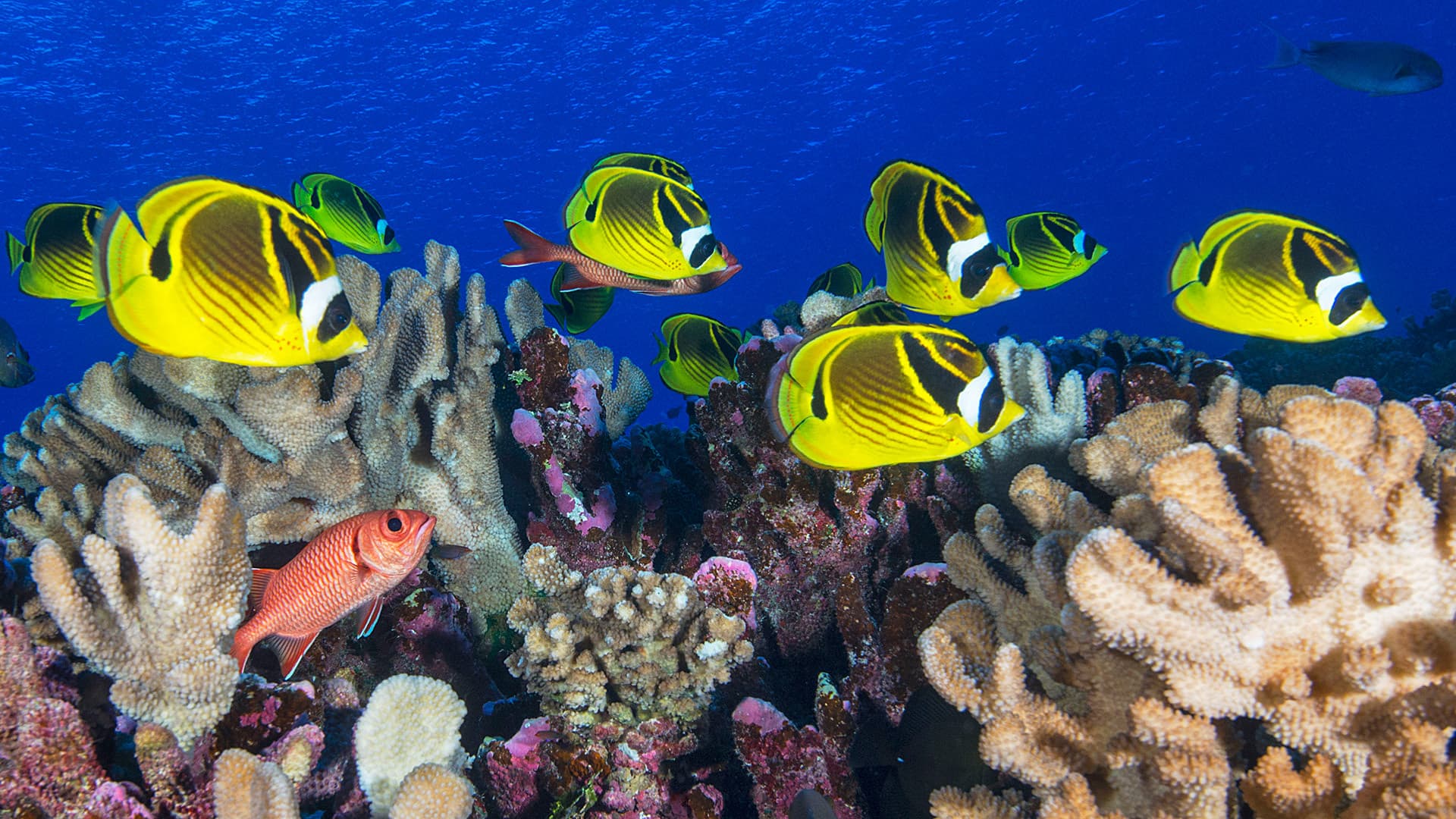Stay safe on the reef
 Ocean Image Bank / Jayne Jenkins
Ocean Image Bank / Jayne Jenkins
This game shows children how a decline in healthy coral can affect the hiding places for small fish on the reef. Avoid the predators, if you can!
Ages 5+
(adult supervision)
15 mins
Part of:
Convex Seascape SurveyThis activity helps children understand how coral bleaching affects reef ecosystems and the fish that depend on healthy coral for protection from predators. Through movement and role-play, students experience how marine habitat degradation impacts small reef fish survival.
Preparation
Clear a large open space in the classroom or use the playground/hall.
Place green paper "healthy coral" across the floor with some space between pieces.
Keep white paper "bleached coral" ready to substitute during the activity.
Use blue tape to mark the boundaries of the "coral reef" area.
Activity Steps
Gather students and explain that they are going to be small fish living on a coral reef. Show quick images of healthy coral and bleached coral side by side. Explain that healthy coral has many colors and provides hiding places for small fish. When the water gets too warm, coral turns white or 'bleaches' and doesn't protect fish as well.
Assign roles:
Most students will be damselfish (small reef fish)
1-2 students will be groupers (predator fish)
Optional: 2-3 students as observers who will report what they see
3. Explain the rules:
Damselfish are safe when touching green coral (they can rest there)
Damselfish are vulnerable when near white coral (they can pass by but not rest)
Groupers try to tag damselfish when they're not touching green coral
Tagged damselfish sit out until the next round
Round 1: Healthy Reef
Start with many green coral pieces spread across the area
Have damselfish move around the reef, using green coral as safe zones
Allow groupers to hunt, but damselfish can easily find safety
Play for 2-3 minutes.
Round 2: Partially Bleached Reef (3 minutes)
Pause the activity and replace about half of the green coral with white coral
Tell students: "The ocean is warming, and some coral is beginning to bleach"
Restart the activity with fewer healthy coral pieces
Damselfish can move past white coral but cannot use it as a safe zone
Round 3: Severely Bleached Reef (3 minutes)
Pause again and replace most remaining green coral with white coral
Tell students: "The ocean has gotten even warmer, and more coral has bleached"
Restart the activity with very few healthy coral pieces
Have damselfish try to survive with limited safe zones
Role Rotation (Optional)
If time allows, rotate roles so more students can experience different perspectives
Discussion points
Gather students in a circle for a group discussion.
Ask damselfish players:
How did you feel when there was plenty of healthy coral?
How did you feel when most coral was bleached?
Was it harder to stay safe when coral was bleaching?
Ask grouper players:
Was it easier to catch fish when there was more bleached coral?
What did you notice about how the damselfish behaved differently?
Ask observers (if used):
What changes did you notice in how fish moved and behaved?
Connect to climate change:
Coral is bleaching in real reefs because the ocean is getting warmer
When coral bleaches, small fish lose their hiding places
This change is happening because of warming caused by people
Safety guidance
Ensure the activity area is clear of obstacles and has sufficient space for movement
Remind students to move carefully and be aware of others
Establish "freeze" signal to immediately stop activity if needed
Make clear rules about gentle tagging if physical contact is part of the game
Brought to you by
